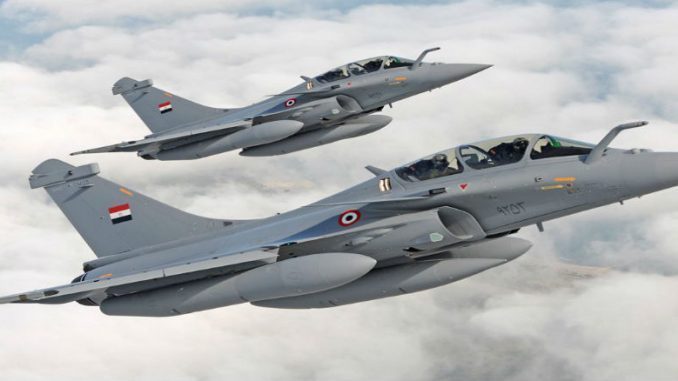
The last deadly attack on the police in Egypt’s Western Desert claimed by a new militant group inferred that Egypt’s al-Sisi is incapable of curbing the flow of terrorism that started to expand by opening up another front for security forces far beyond the remote northern Sinai.
Since the military coup in 2013, the Egyptian security forces have battled a “Sinai Province” a group affiliated to the Islamic State insurgency. However, a little-known group called Ansar al-Islam claimed responsibility for the October 21 attack.
“Analysts and security sources said the heavy weapons and tactics employed indicated ties to Islamic State or more likely an al Qaeda brigade led by Hesham al-Ashmawy, a former Egyptian special forces officer turned jihadist,”as reported by Reuters.
It is worth to mention that Abdel Fattah al-Sisi has already suggested fighters from Islamic State will move into Egypt and neighboring Libya now that the group in on the retreat in Iraq and Syria after a string of losses.
In fact, security is key for al-Sisi, a former military commander who presents himself as a bulwark against Islamist militants, as he looks set to seek re-election next year.
However,security sources, analysts and residents say that the claims of a new front with possible ties to Ashmawy and al Qaeda would increase risks the security forces face in the Western Desert, where militants can already take advantage of the terrain and the porous Libyan border.
Evidence showed one militant killed in a follow-up raid was a former military officer and second-in-command to Ashmawy, whose allegiance switched from Islamic State in the Sinai to al Qaeda, and who has been based in Libya since 2014, said two security sources and a medical source.
H.A. Hellyer, an Egypt expert and senior non-resident fellow at the Atlantic Council said,”If he has been involved with what appears to have been a heavily armed and wholly unexpected operation on the Egyptian side of the Egypt-Libya border, that’s of great concern.”
An interior ministry official said he could neither confirm nor deny the validity of the Ansar al-Islam claim as it was being investigated. Prosecutors are also investigating the attack.
The militants in Western Desert appeared more professional than in Sinai, said two Homeland Security officers. The officers, who work on gathering intelligence, said militants tied to Ashmawy could draw on experience of members who once were in the Thunderbolt elite army unit, or former police.
One officer said,”Ashmawy and four other former officers have experience in fighting, surveillance, and planning so the group they have with them is dangerous,”referring to Ashmawy’s brigade commanders.
It remains unclear exactly what happened when an Egyptian police convoy ran into an apparently well-planned ambush by a heavily armed militant group in a remote, desert area 135 km (85 miles) southwest of Cairo.
Three security sources told Reuters at the time that dozens of police officers and conscripts were killed. But the interior ministry refuted that figure the next day and said 16 police and conscripts died, including some high-ranking officers.
One part of the operation was hit by rockets and heavy weapons, officials and sources said. The lead and rear vehicles were hit first, immobilizing the convoy, security sources said.
On Oct. 28, the interior ministry replaced several senior security officials in charge of the area where the attack happened, including a homeland security chief and a Giza province security chief, though no reason was given.
On October 31, the army launched air strikes against the militants it said were responsible, killing dozens and rescuing a kidnapped and wounded policeman.
The new group gave no evidence of its October 21 claim, and it said the oasis attack was the start of a campaign against Sisi’s government. It gave a list of grievances but no evidence on the size of its operations or its abilities.
In fact, Ansar al-Islam’s statement was carried by another group with al Qaeda links, Guardians of Sharia, whose social media feeds also carry statements from al Qaeda chief Ayman al-Zawahri.
Three security sources in the Giza area said they believe the attack may have been the work of Ashmawy’s militants.
The Egyptian security forces believe he fled to Libya in 2014. He has strong ties in the Libyan city of Derna, where he operates an al Qaeda cell with other former Egyptian officers.
Motreover, has been blamed for high-profile attacks such as the killing in June 2015 of Egypt’s top public prosecutor in a car bomb. But moving into Egypt would also raise questions about whether he had shifted his area of operations.
Both Islamic State and al Qaeda have brigades operating in North Africa, where they have competed for space in Libya, especially in Derna, and sometimes operated alongside each other in small brigades in countries like Tunisia and Algeria.
“Assessing the new group’s capabilities or loyalties was difficult, but there could be an effort by al Qaeda to benefit from Islamic State’s decline to bolster its presence and recruits locally,”said Oded Berkowitz, an intelligence analyst for risk consulting group MAX Security.
He said,”There is a strong al Qaeda presence in Libya that can support such an endeavor in Egypt. Usually, a militant group in decline (IS) and an increase in competition between two groups translates into a more aggressive stance, and attempts at larger and more quality attacks.”
Accordingly, the information about the new group and its links isn’t yet confirmed, but it questioned Abdel Fattah al-Sisi’s capabilities in maintaining security in the country.
Egypt’s security forces, who are are fighting several militant groups in Sinai,are now facing other attacks outside the peninsula.
The Western Desert, a vast region making up more than half of Egypt’s territory, has always been a security headache with arms flowing across the frontier from Libya.
The chaos that followed the fall of Muammar Gaddafi in 2011 had allowed militant groups to find shelter across the border.
Over the last two years, heightened militant were seen around the area of the ambush by residents, businessmen and security sources. They said that militants sometimes openly driving along highways at night, and carrying out hit-and-run attacks.
One Egyptian military intelligence officer working in Farafra Oasis area near the October 21 attack said, “It’s closer for them to bring the weapons from Libya and it’s closer for them to carry out their operations, then flee to Libya or hide out in the desert.”
“Egypt’s continuing struggle against Islamist insurgencies at home contrasts with Islamic State’s big losses in Iraq and Syria. In Libya’s southern Sahara, Islamic State shows signs of a revival after losing Sirte city a year ago,”said Reuters.
In September, U.S. forces carried out air strikes to destroy an Islamic State camp in Libya which was the first for almost a year.
When Islamic State leader Abu Bakr Al-Baghdadi in September urged followers to stand fast after defeats in Iraq and Syria, he mentioned Sinai and Sirte as places where they should fight.
Islamic State, which some experts had suspected was involved, included details of the October 21 attack in its Al-Nabaa news bulletin, but without any claim of responsibility.
It is worth to mention that the Western Desert attack came as Egypt hopes a peace agreement between Palestinian rivals Fatah and Hamas on the Gaza Strip across its Sinai border can help stabilize that area and curb supplies to militants on the peninsula.
One police officer working in the area said,”Militants are able to move in the Western Desert easier than they do in Sinai, due to the open geographic nature,” he added, “It’s not like Sinai, which you can cordon off.”



